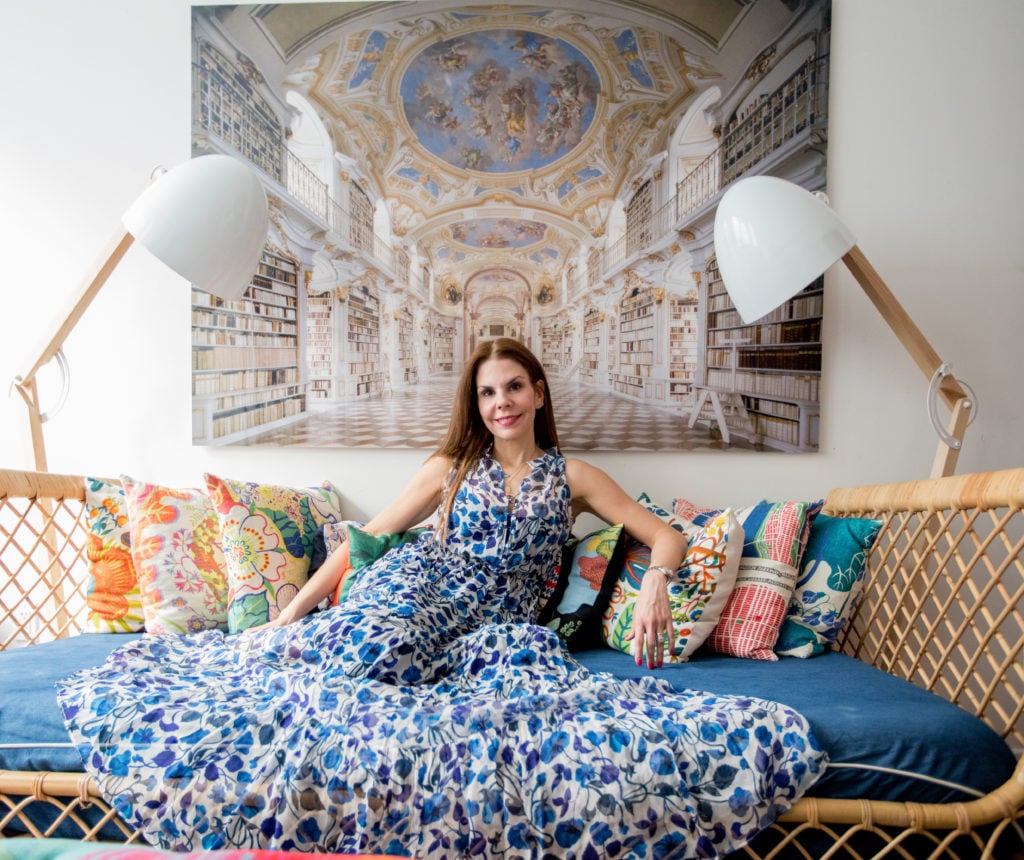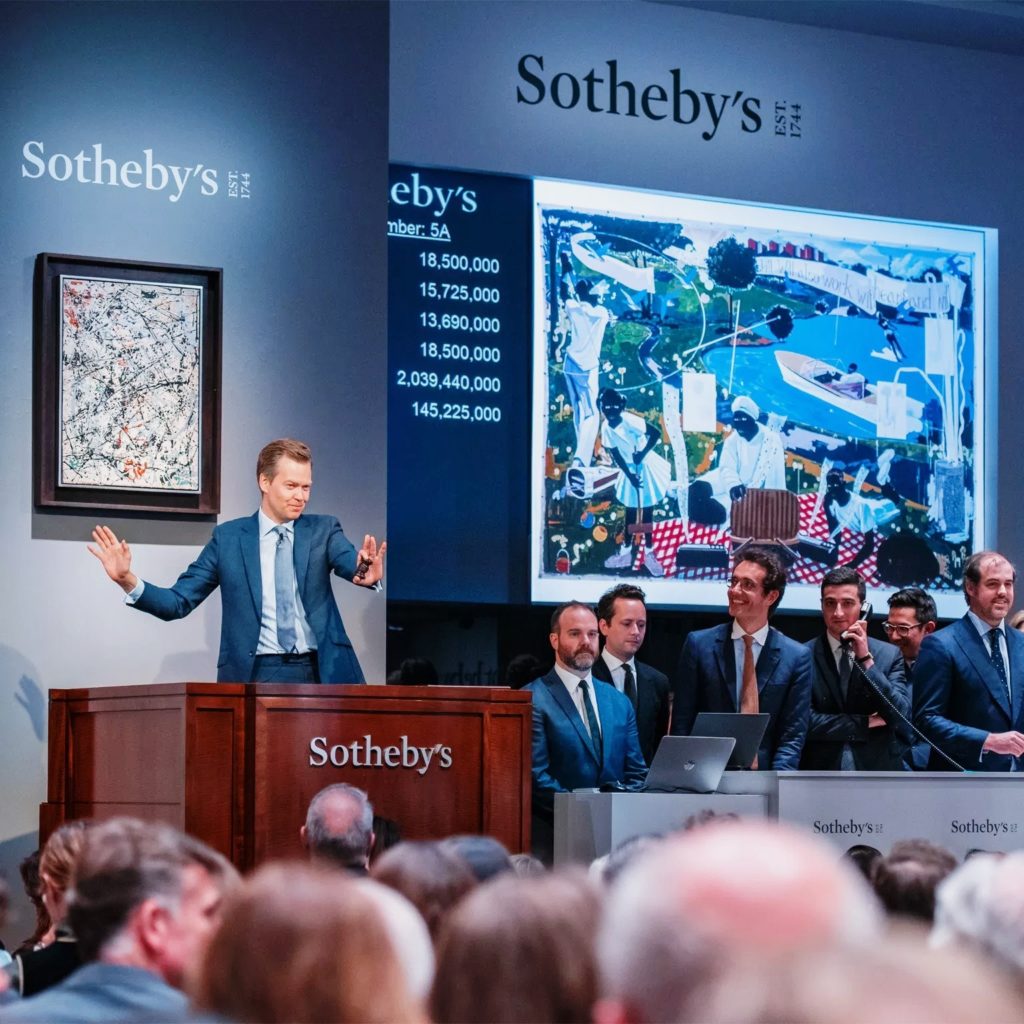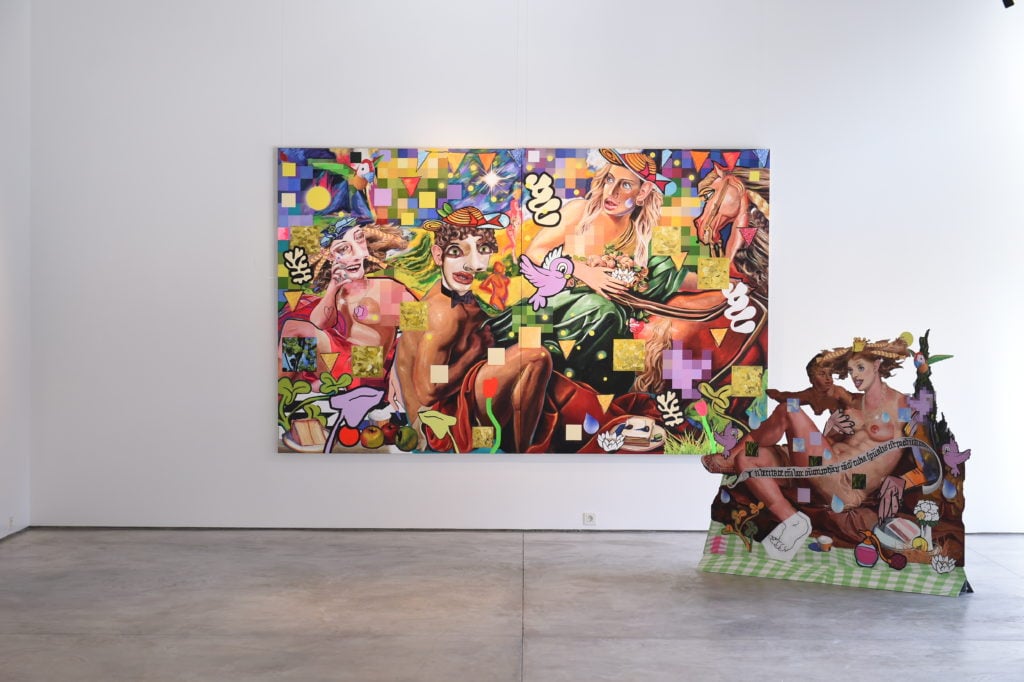People
Art Advisor Maria Brito, Who Helps Shape Diddy and Gwyneth Paltrow’s Collections, on the Growing Alliance Between Hollywood and Art
"Hip-hop was born as protest," Brito says. "Many visual artists are quite similar in their ethos."

"Hip-hop was born as protest," Brito says. "Many visual artists are quite similar in their ethos."

Rachel Corbett

Last spring, in the span of a month, news came that hip-hop mogul Diddy was the buyer of a $21 million painting by Kerry James Marshall at Sotheby’s, and then that Beyoncé and Jay-Z‘s video for their single “Apeshit” had been shot entirely in the Louvre, boosting the museum’s record-breaking attendance figures last year. A few months later, Kanye West pledged $10 million to help fund James Turrell’s Roden Crater.
It all seemed to herald the dawn of a new era of the celebrity art collector, with hip-hop stars often leading the charge. To understand what’s behind this shifting landscape in the blue-chip art market, we spoke with Maria Brito, the Venezuelan-born advisor to Diddy, Gwyneth Paltrow, celebrity trainer Tracey Anderson, and other celebrity entertainers, about how the traditional gallery world might adapt to this new class of collectors.
Dealers, advisors, and auction houses have long tried to cultivate interest in the art market among celebrities, but often with limited success. Do you think this is finally changing? When did it start?
I think the expansion of the market, which includes galleries and fairs, has made art more accessible, but that doesn’t mean that the collector base has grown exponentially. Lots of celebrities have been collecting for a long time but nobody knew because they kept their collections private. But now with Instagram and all of the art activations, it’s easy to know what everyone is doing, so that has given us another eye into their lives. Also, who’s collecting what? That’s an important question. Celebrities tend to start very cautiously in the art world. There’s Leonardo DiCaprio, Jay-Z, Courtney Cox, Madonna, Pharrell, and many others who are constantly buying art and supporting artists, and there are others who are newer to collecting and don’t make buying a priority, and there are other celebrities who are just decorating their homes and stop there. Nothing is wrong with any group. It’s just a different level of involvement.
Among celebrities, art seems to have particularly taken hold in the hip-hop world in recent years. Do you have any thoughts on how this happened?
Hip-hop was born as protest against abuses suffered by minorities and it’s fundamentally based on the lyrics, which in many instances are political and say things that people are afraid of saying or things people don’t want to hear. Many visual artists are quite similar in their ethos; they paint or sculpt or create things from our society and our history that are hard to digest. It’s easy to see why hip-hop performers find an affinity to visual art. And in the past 20 years, the base of hip-hop and rap performers with sufficient money to start an art collection has expanded a lot, because the genre became mainstream and found a gigantic fan base in the US and beyond.

The auction of Kerry James Marshall’s Past Times. Courtesy of Sotheby’s.
Were you involved in Diddy’s purchase of the $21 million Kerry James Marshall painting last year? Have you had any conversations with him about Marshall’s work before or since then?
Sean and I have had a very long work-friend relationship. We exchange emails and phone calls and we talk about art and artists as much as practically possible given his commitments and schedule. It’s important to understand that the work he acquired isn’t only one of Kerry James Marshall’s best, but also the subject matter is crucial: black people engaged in activities that were considered at some point in history exclusive to only white people with wealth. If you see the history of hip-hop and the history of Sean’s own efforts, it’s all about elevating minorities. This painting is quite representative of his message.
Is this new class of pop-culture collector interested in a different kind of art? Are their expectations different?
I think everyone wants to acquire work that truly speaks to who they are. And this is true for celebrities and non-celebrities alike. There has been a massive shift in the past two years on how collectors appreciate and understand issues of race, gender, identity, and the self, and how they see themselves in the works they are collecting.
What’s your strategy for introducing art to clients who may not otherwise be exposed to the particular social and intellectual rituals of the art world? Do you try to help them look at art differently?
It’s always an honor and a privilege to be entrusted with someone’s beginnings as an art collector, no matter who they are. I think the trick is to not show too much too soon or else you get the opposite of the desired outcome: they just don’t want to see or buy anything. Art fairs are tough for the uninitiated eye, but at the same time, there’s not a better place to see as much variety under one roof and help a new collector form a perspective, at least from an aesthetic point of view. The depth of subject matter, process, art-historical references—that all starts to form at the beginning but it doesn’t fully gel until the collector has had a few encounters with the same artist’s work. I’m always pushing my collectors to see differently, to see beyond the surface, and hopefully to understand why there’s relevance that extends beyond what the eyes can appreciate.
Have galleries adapted to become more welcoming to collectors from the entertainment sphere?
Yes, they have. I think they have always understood the importance of good entertainer patrons of the arts because the relationship usually extends beyond just acquiring art.

Allison Zuckerman’s 2019 painting Steeplechase and her sculpture Hardened through time, in “The Thousand and One Nights” exhibition, curated by Maria Brito. Courtesy of Artual Gallery.
You’ve also taken up curating, most recently with a group show of contemporary American art at Artual Gallery in Beirut. What was the genesis for this project?
Curating a show in the Middle East for the opening of a new gallery with artists who created works from scratch to fit my premise was definitely a highlight for me. It’s a very different thing to go and pull from the artists’ studios whatever they have there than it is to make them create in five months what I asked them to do—especially when all these young artists are so hot and in demand. The owner of the gallery, Hind Ahmad, worked at Victoria Miro and also studied art in London. She comes from a family of art collectors and wanted to open her own space in Beirut in a way that has never been done: by collaborating with curators and other galleries to bring international artists who have rarely, if ever, been shown in commercial galleries in Lebanon. I was very honored to be the first of these curators.
I wanted to start the exhibition program with a true link of East-West, so I asked Allison Zuckerman, Rosson Crow, Holly Coulis, Jonathan Chapline, Jamea Richmond-Edwards, Monica Kim-Garza, and Canyon Castator to make paintings and sculptures reinterpreting the tales of One Thousand and One Nights, which is the most important contribution of Middle Eastern literature to the world. There are super important references to feminism, freedom of speech, and female strength as the ingenious heroine Scheherazade saved her life by telling the king creative and imaginative stories every night. The show was a massive success and was received in Beirut in ways that moved and surprised me. Eighty-five percent of the works were sold before the show opened and the rest in the few days after. A journalist told me the night of the opening that she had never seen so many vibrant colors in paintings in her life. A collector mentioned that it was a show infused with possibility and positivity, which is particularly meaningful in a country that has endured many wars with neighboring countries and a horrific civil war that lasted almost 15 years. Local artists and some of the local galleries still show that war-oriented work. Nothing wrong with it, but that’s not what Artual’s objective is.
What else are you working on these days?
I was recently invited to curate a couple shows and I also have to keep all my private collectors happy. There are many, so that takes a lot of my time. Content creation is also a huge part of what I do. That’s why I create a monthly video with an artist or a curator (like I did with Jose Diaz, chief curator of the Andy Warhol Museum) and we engage in conversation where I try to humanize what otherwise can get a bit lost in videos that are just about the artist alone in their studio. I want the world to see them laughing or maybe being a bit emotional or taking a stand for what they believe in.